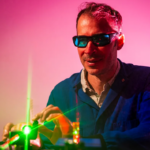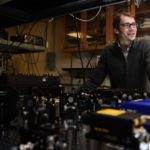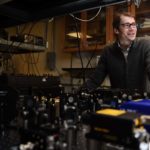About Bryan Spring
Professor Spring’s group bridges biophysics, biomedical optics and cancer biology to selectively target micrometastases left behind by standard therapies that limit our ability to cure many cancers. Optical spectroscopic imaging and photophysics are applied to visualize and mop up these residual tumors. The ultimate goal of the program is to reduce cancer recurrence and mortality by establishing new approaches for personalized medicine that address tumor heterogeneity, drug-resistance and molecular mechanisms of treatment escape. Advanced-stage cancer patients are presently subjected to a grueling treatment regimen consisting of surgical tumor debulking and high-dose-intensity chemotherapy. These standard approaches frequently hit a wall due to dose-limiting toxicities as well as mechanisms of drug-resistance and treatment escape via cell signaling networks.
To address these challenges, the group’s efforts focus on developments in photomedicine in concert with guidance from in vivo microscopy for the discovery of dynamic molecular mechanisms of treatment escape and for the rational design of therapeutic regimens that overcome resistance. In vivo imaging is used for microscopic-resolution “optical biopsy” to identify deposits of drug-resistant cancer cells and to monitor cell signaling events without the need for invasive surgeries and tissue biopsies that can miss smaller lesions. Near infrared light activation of molecular-targeted chromophores is applied to selectively damage drug-resistant cancer cells, to suppress mechanisms of treatment escape and to sensitize the tumor to systemic therapies—including chemotherapy and immunotherapy.
A major focus of the group is to develop multicolor in vivo microendoscopy and molecular-targeted agents for both imaging and therapy. The group builds new fluorescence microendoscopy tools (e.g., hyperspectral, lifetime-resolved and FRET imaging); develops real-time image analysis software; designs and synthesizes molecular-targeted probes; and, develops mouse models of cancer.
Postdoctoral and graduate research positions are presently available. Applications may be sent by email to Professor Spring.
The Institute develops imaging tools to highlight chemical processes – enabling clinicians to better diagnose and treat disease.
Professor Spring’s group bridges biophysics, biomedical optics and cancer biology to selectively target micrometastases left behind by standard therapies that limit our ability to cure many cancers.
Publications:
-
Google ScholarRead




